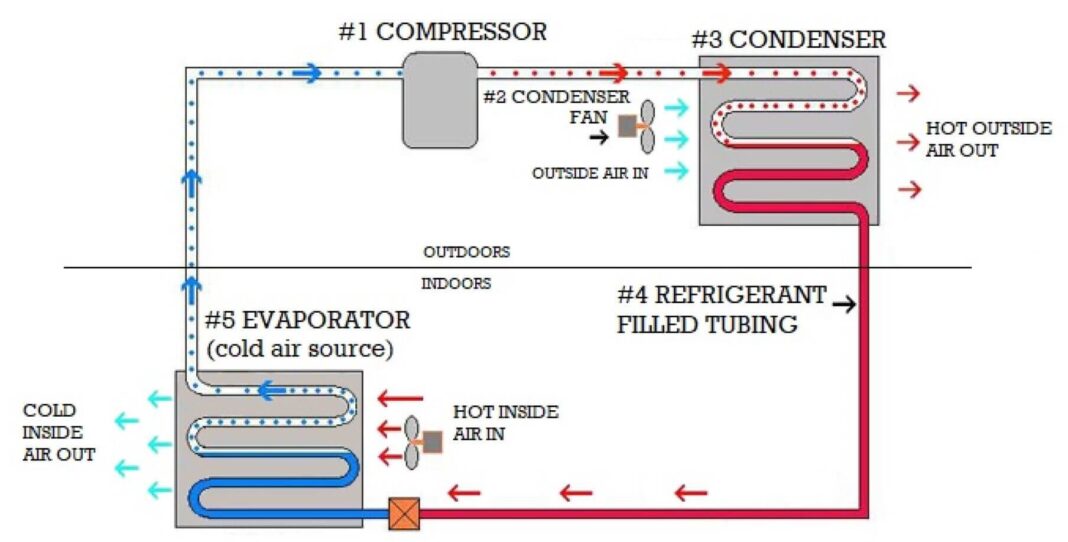An HVAC (heating, ventilation, and air conditioning) system warms your house during cold seasons and cools it during hot seasons. Your HVAC system has multiple components that work together to heat, cool, and ventilate your home. Understanding how each component works can make troubleshooting HVAC problems easier and help you know when to search”HVAC repair near me.”
Furnaces
Furnaces heat the air in a building, keeping it warm. An HVAC system draws air through the ducts into the furnace and through the heat exchanger. A furnace has a combustion chamber, which heats the heat exchanger to a set temperature. As air passes through the heat exchanger, it conducts heat. A motor in the furnace blows the hot air into the ducts, which circulate it around the house.
Furnaces use gas or oil for fuel. The fuel goes to a burner in the combustion chamber, which ignites, releasing heat onto the heat exchanger.
Read Also: How Often Should I Get New Glasses?
Air Conditioning Systems
Air conditioning (AC) systems cool the air in a home. ACs have a fan that draws in air and passes it over evaporator coils filled with refrigerant. The refrigerant in the evaporator coils removes heat from the air, cooling it. A blower in your AC’s air handler sends the cool air into the air ducts, which circulate it around the house.
The refrigerant, which evaporates upon absorbing heat from the air, moves into the compressor, pressuring it. It then travels into the condenser, where it expels the heat it has absorbed and condenses back into its liquid form. A fan in the AC blows out the heat the refrigerant releases, helping it remain liquid.
Heat Pumps
Heat pumps work similarly to air conditioners to cool the home but can also heat the house. To cool your home, a heat pump draws in indoor air and blows it across evaporator coils. The refrigerant in the evaporator coils absorbs the heat from the air, which is expelled outside the building. The now cool air moves into the air ducts and circulates across the house.
A heat pump in heating mode works similarly to the cooling mode, only in reverse. A reversing valve in the heat pump reverses the refrigerant flow in the heating pump in heating mode, using outside air as the heat source. Once the pump draws in outdoor air, the refrigerant absorbs heat from the air and heats the coils. The air then moves over the heated coils, gets warmed to the desired temperature, and is released into the home.
Thermostat
The thermostat is your HVAC system’s command center. It can allow you to control and adjust the temperatures in your home according to your preference. Some HVAC systems have smart thermostats that you can set to change the temperatures at different times of the day.
Air Exchangers
Air exchangers are your HVAC system’s ventilators. An air exchanger brings in fresh air from outside and exchanges it with stale or used air in the house. This happens while also controlling temperature and humidity. This continuous fresh air flow can help decrease energy costs and improve indoor air quality. The type of air exchanger you choose for your home depends on factors like climate and the size of your home.
Air Filters
Air filters clean the air circulating around your home, eliminating contaminants that may cause respiratory issues. The air your HVAC system draws in passes through the filter, where the filter material traps pollutants like dust and pollen.
Every time air passes through the filters, contaminants build up and eventually clog the filters, reducing your HVAC system’s airflow. Replacing your air filters every few months can keep your HVAC system working in good condition.
Vents and Ducts
Vents are the openings through which the air the ducts carry enters different rooms, cooling or heating the home. Ducts are the channels that carry the air from your HVAC system around your house. Two types of ductwork are used for HVAC systems: flexible and rigid. Flexible ducts can be made from materials like PVC and fiberglass. Rigid ducts can be constructed from sheet metal or other durable materials. Search for “HVAC repair near me” when installing ductwork to get a reliable HVAC technician to install the correct type.
HVAC Repair Near Me
An HVAC system circulates air from one part of the house to another, regulating temperature, humidity, and air quality throughout your home. Regular maintenance and upkeep can help it provide energy efficiency for years to come while also helping maintain healthy indoor air quality. You can find local HVAC technicians who can diagnose and repair any problems with your system.


